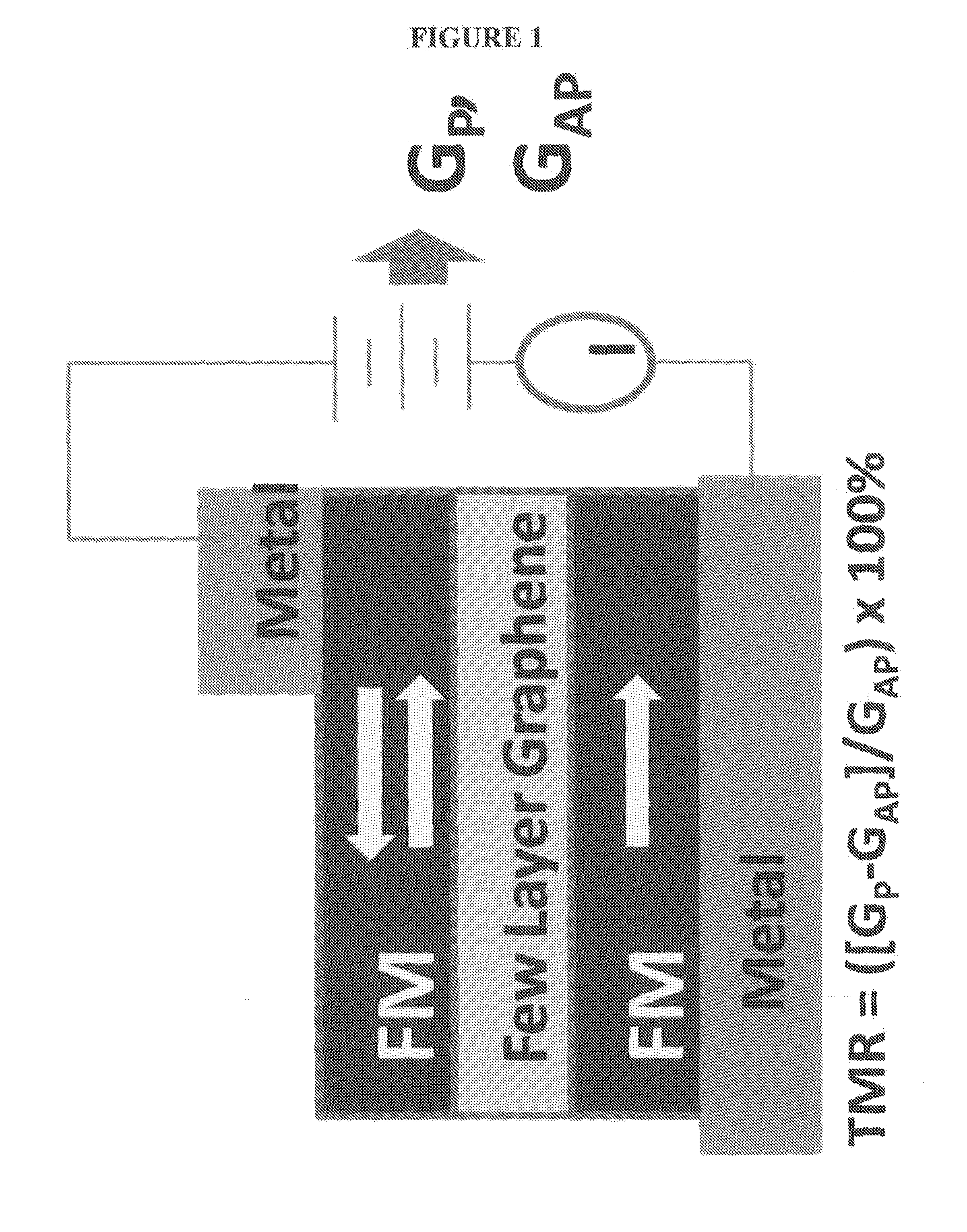Graphene magnetic tunnel junction spin filters and methods of making
a technology of tunnel junction and spin filter, which is applied in the field of making graphene tunnel junction spin filter and the field of graphene magnetic tunnel junction spin filter, to achieve the effect of superior properties
- Summary
- Abstract
- Description
- Claims
- Application Information
AI Technical Summary
Benefits of technology
Problems solved by technology
Method used
Image
Examples
Embodiment Construction
Procedures and Results
[0014]The FM / few layer graphene / FM stack based MTJ of the invention was made by first using electron beam evaporation to deposit ˜40 Å of (disordered) cobalt on a Al2O3 (0001) substrate, at a background pressure of ˜1×10−8 Torr, resulting in some carbon being dissolved in the cobalt film. Annealing of the film to ˜600 K in UHV results in the segregation of dissolved carbon to the surface of the cobalt film as it orders to form a Co(111) film with carbon overlayer.
[0015]Auger C(KVV) Auger data (FIG. 2) shows that the thickness of the carbon overlayer grows to an average thickness of ˜3.5 monolayers during the annealing process, while transforming from sp3 to sp2 carbon chemical bonding—the formation of few layer graphene.
[0016]Corresponding LEED data (FIG. 3) obtained from the carbon segregation event demonstrate that the graphene layers are highly ordered, displaying well-defined diffraction spots at 300 relative to the Co diffraction spots. The Auger data (FIG...
PUM
| Property | Measurement | Unit |
|---|---|---|
| temperatures | aaaaa | aaaaa |
| thickness | aaaaa | aaaaa |
| temperatures | aaaaa | aaaaa |
Abstract
Description
Claims
Application Information
 Login to View More
Login to View More - R&D
- Intellectual Property
- Life Sciences
- Materials
- Tech Scout
- Unparalleled Data Quality
- Higher Quality Content
- 60% Fewer Hallucinations
Browse by: Latest US Patents, China's latest patents, Technical Efficacy Thesaurus, Application Domain, Technology Topic, Popular Technical Reports.
© 2025 PatSnap. All rights reserved.Legal|Privacy policy|Modern Slavery Act Transparency Statement|Sitemap|About US| Contact US: help@patsnap.com



